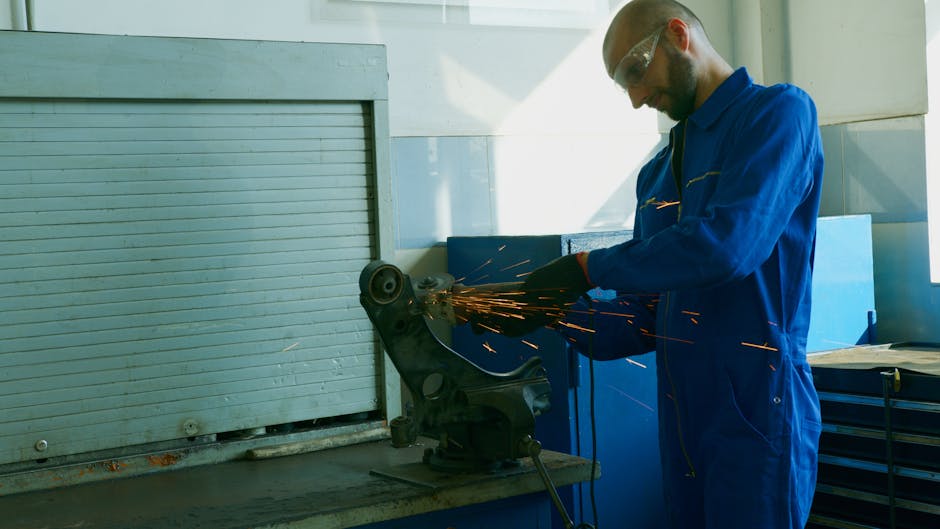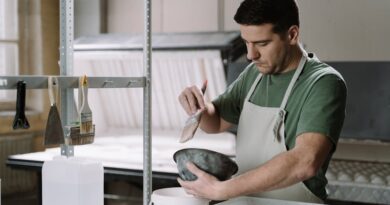Five Steps to Greener Manufacturing Processes
Did you know that manufacturing accounts for about 20% of global greenhouse gas emissions? This number is staggering, but it also provides an opportunity for change. By adopting greener manufacturing processes, we can reduce our impact on the planet and save money. This guide will walk you through five simple steps to make your manufacturing greener and more sustainable.
What Are Greener Manufacturing Processes?

Greener manufacturing processes refer to methods that reduce waste, conserve energy, and use resources more efficiently. Think of it like this: just as you might recycle at home or use energy-efficient light bulbs, businesses can implement practices that protect the environment. These processes not only help the planet but can also lead to cost savings and improved brand reputation.
Step 1: Assess Your Current Processes

The first step to going green is understanding where you currently stand. This means taking a close look at your manufacturing processes. What materials are you using? How much energy does your facility consume? Are there any by-products that could be reused?
Start by conducting an audit. Heres how:
- Track energy use over a month.
- Identify waste materials generated during production.
- Review supplier practices and sourcing methods.
This assessment will provide a clear picture of what you do well and where there is room for improvement. Remember, knowledge is power!
Step 2: Embrace Energy Efficiency

Energy efficiency is a crucial part of greener manufacturing. it’s not just about saving the planet; it’s also about saving money. By using less energy, you can lower your utility bills and reduce your carbon footprint.
Consider these actions:
- Upgrade to energy-efficient machines.
- Implement smart controls for lighting and heating.
- Train employees on energy-saving practices.
For instance, a factory that upgraded it’s lighting to LEDs reduced it’s energy costs by 25%. that’s a win-win for both the environment and the bottom line!
Step 3: Reduce, Reuse, and Recycle

The three “R’s” are foundational in creating a greener manufacturing process. These practices help minimize waste and make better use of resources. But how can you apply them in a manufacturing setting?
Heres what to consider:
- Reduce waste by optimizing material usage.
- Reuse materials when possible, such as pallets or packaging.
- Set up recycling programs for scrap materials.
For example, a company that recycles it’s metal scraps can often sell them for a profit. Not only does this reduce waste, but it also adds to the companys revenue.
Step 4: Source Sustainable Materials
Choosing sustainable materials is another significant step toward greener manufacturing. This means selecting materials that are renewable or have a lower environmental impact. Think about it like choosing organic produce at the grocery store.
Heres how to source better materials:
- Research suppliers committed to sustainability.
- Consider using recycled materials in your products.
- Opt for locally sourced materials to reduce transportation emissions.
One study found that companies that prioritize sustainable sourcing can improve customer loyalty. Shoppers are increasingly looking for eco-friendly options, so this step can also benefit your brand image.
Step 5: Engage Employees and Foster a Green Culture
No change can happen without the support of your team. Engaging employees in your green initiatives is crucial. Make sustainability a part of your company culture.
Here are some ways to involve your team:
- Host workshops on sustainability practices.
- Encourage employees to suggest green ideas.
- Recognize and reward efforts to reduce waste.
A company that empowers it’s employees to think green can boost morale and productivity. Plus, it creates a shared sense of purpose.
Why Does This Matter?
By adopting these five steps, you help create a cleaner, healthier planet. Greener manufacturing processes reduce pollution, conserve natural resources, and often lead to cost savings. it’s not just about doing the right thing; it’s also about being smart in business.
Statistics show that businesses implementing sustainable practices can see sales increase by 15-20%. Customers are increasingly drawn to brands that demonstrate social responsibility.
Common Questions and Misconceptions
Some may wonder if going green is too expensive. While there may be initial costs, many green practices lead to long-term savings. Energy-efficient machinery, for example, pays for itself through reduced energy bills.
Another misconception is that small changes won’t make a difference. In reality, small steps can lead to significant impact when combined with others. Each effort counts!
Actionable Takeaways
Heres a quick summary to help you remember the steps to greener manufacturing:
- Assess your current processes to identify improvement areas.
- Embrace energy efficiency to save costs and resources.
- Practice the three “R’s”: reduce, reuse, and recycle.
- Source sustainable materials to lessen your environmental impact.
- Engage employees to foster a culture of sustainability.
By following these steps, you not only contribute to a healthier planet but also enhance your business’s competitiveness. It’s a win-win situation!
For more information on sustainable manufacturing practices, consider visiting the EPA’s Sustainable Manufacturing page.
Lets make our manufacturing processes greener together! Every step counts, and your actions can inspire others. Ready to get started?



